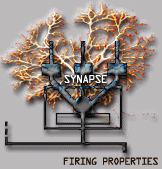 SCOPE
SCOPE  SCOPE
SCOPE We argue that danger is the unsuspected consciousness carrier, on an evolutionary narrative.
A physical-psychophysical theory, for the human species, with behaviors mostly inherited from ancestral ones, could tell, for instance, how physical processes first gave rise to evolutive increasing sensitivity to dangerous conditions for the species, sensitivity obtained through a general playful disposition, and then, as a gradual consequence, to primitive, fuzzy, awareness, to oriented awareness, to selective awareness, and to a hard-to-solve problem.
This hard problem involves the emergence of conscious experience (synonymous to P-consciousness) in the course of a physical-psychophysical development. Our hypothesis is that after a period of oriented awareness to danger (found after trying limit options in playing episodes), with a partial contribution of memory and the recognition of previous risk-related situations, a new period followed, described by a generalized awareness to the external world, a generalized hypercontrol of all brain-related biocontrols, hypercontrol which one feels when awake (one feels that the home is in order, or not quite) and one of P-conscious experience with respect to danger (danger feelings, danger sensations, danger experience proper, with a memory component). Memory, feelings, sensations, P-conscious experience (for instance in the middle of a horse stampede because of fire), were all apt contributions for the selective pressure on alarm responses. Any particular aim, was further amplified towards a general one, a state of general attention to, and consciousness of, an external complex world. This emergence nucleated at the end of the narrative with what we could name as our own species mental Operating System (in computer jargon).
In principle, nothing out of the realms of strict science should appear with such physical-psychophysical theories.
David J. Chalmers proposed a tentative guide for a solution to the hard problem within a physics frame of knowledge:
"If this view is right, then in some ways a theory of consciousness will have more in common with a theory in physics than a theory in biology. Biological theories involve no principles that are fundamental in this way, so biological theory has a certain complexity and messiness to it; but theories in physics, insofar as they deal with fundamental principles, aspire to simplicity and elegance... The principles of simplicity, elegance, and even beauty that drive physicists' search for a fundamental theory will also apply to a theory of consciousness."
He suggests that Shannon's information theory, with a dual interpretation, helps in presenting a guide according to which the hard problem could be solved in the future -the search of a mechanism explaining P-conscious experience, which is absent in physics.
Now we argue in the same direction as Chalmers, that the danger perception, which is also outside of physics, is the gateway to consciousness. Danger perception, as also danger experience, is tipified by a strange data configuration of one of the highest information contents.
Following Chalmers, we are interested in the consequences of biological and neural applications of the 1949-born Information Theory.
Shannon's theory introduces the notion of a high information content or surprise level related to some uncommon configurations among a physical flow of events, just as a sensory information flow links unexpected predator signs to a physical-psychophysical prey alarm- response. Adding to traditional and Chalmers points-of-view, we put weight on sensitivity to alarming conditions and on its evolutive consequences: access-consciousness, oriented, selective awareness and conscious experience. The aim is to explain the series. These arguments use a new implication of our own society-of-the-mind self-organization body-brain-mind model with a biothermodynamic background.
Perhaps a non-traditional Physics chapter on the subject of a Shannon's-based "alarm-oriented physical psychophysics", may end up with almost a theory of everything, consciousness included.
OTHER
2.feb.1999
Pulsar tecla de vuelta
Glosario de Carlos von der Becke, where some specialized words are explained.